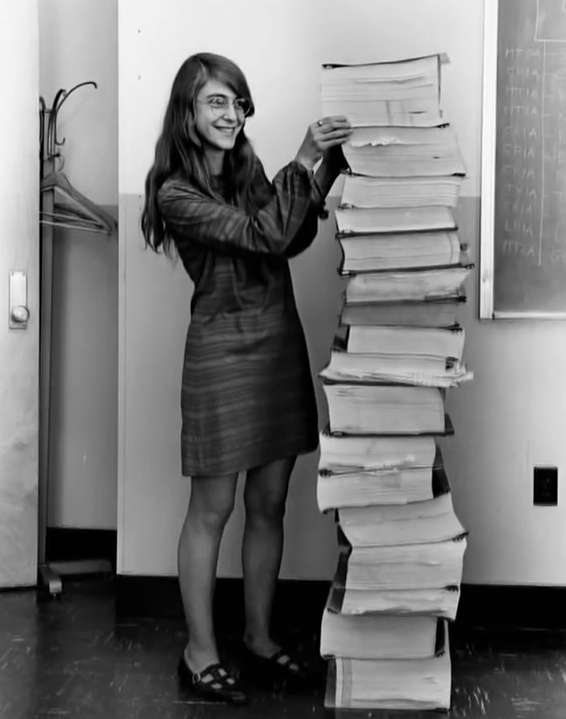History of Computers - Apollo Guidance Computer
Peter Buckman
Introduction
The Apollo Guidance Computer was a computer developed in the 1960s that was placed on each Apollo Command Module and Lunar Module, which were launched into space on Saturn V rockets. This computer helped astronauts conduct calculations for guidance and navigation on all the Apollo Missions and allowed man to walk on the moon for the first time.

http://5cience.net/post/8Gcmg3/the-apollo-guidance-computer-agc-/
Overview
The computer was designed by the MIT Instrumentation Laboratory, and was the first computer to use integrated circuits, or a micro chip, a chip with resistors, capacitors, and transistors on it.[1] The computer had a user-interface known as "DSKY", or display and keyboard, two on each command module, and one on the lunar module. It allowed for communication between the computer and astronaut, and when entering commands, they were usually taken as two-digit number- the first would usually represent the action to be done, while the second would represent the data that the action would be used on.[2]The computer had a 2.048 MHz clock speed from a crystal clock, an electronic oscillator that uses a vibrating crystal in order to create a very precise electrical signal frequency.[3] This clock speed was then split into various different speeds (1.024 MHz, 512 KHz) to perform internal and external processes, respectively. Also, the computer had a 16-bit world length, and a 2,048 length word memory of magnetic core memory. The computer used 16-bit bus and 16-bit registers. The software design was lead by lead software engineer, Margaret Hamilton, and was written in Apollo Guidance Computer assembly language.

Significance
The Apollo Guidance computer was used on the missions to the moon, eventually landing the first man their on July 20, 1969 (Neil Armstrong). While this is a momentous and incredible feat in itself, it is also amazing to see the difference between this computer and the computers we have nowadays. While this computer had a clock speed (which is the processor speed as well) of around 1 MH and a memory of 2,048 words, an Iphone 5s has a processor speed of 1.3 gigahertz and 64 gigabytes of memory.[4] When looking back at this achievement in computing, it is hard to believe that this computer was the start of a computer revolution that would lead to the creation of our computers today.
Links
https://en.wikipedia.org/wiki/Apollo_Guidance_Computer#Operation
https://en.wikipedia.org/wiki/Margaret_Hamilton_(scientist)
http://ntrs.nasa.gov/archive/nasa/casi.ntrs.nasa.gov/20090016290.pdf
References
- ↑ Hall, Eldon C. (1996), Journey to the Moon: The History of the Apollo Guidance Computer, Reston, Virginia, USA: AIAA, p. 196, ISBN 1-56347-185-X
- ↑ http://klabs.org/history/apollo_11_alarms/eyles_2004/eyles_2004.htm
- ↑ The term "crystal oscillator" refers to the circuit, not the resonator: Graf, Rudolf F. (1999). Modern Dictionary of Electronics, 7th Ed. US: Newnes. pp. 162, 163. ISBN 0750698667.
- ↑ http://www.thedailycrate.com/2014/02/01/geek-tech-apollo-guidance-computer-vs-iphone-5s/